| Title | Resident Evil (2002) |
| Released | April 30, 2002 |
| Developer(s): | Capcom Production Studio 4 |
| Publisher(s): | Capcom Co., Ltd. |
| Platform(s): | |
| Genre | Survival Horror |
| Rating | M |
Completed on the PC, PS4, Xbox One S, and Xbox Series X.
HowLongToBeat Time: 11.5hrs | My Clear Time: 3hrs 24s
Captures from PC playthrough.
Background
The 2002 remake of Resident Evil was driven by a clear vision from director Shinji Mikami and producer Hiroyuki Kobayashi. Released six years after the original, the remake was not just an update but also designed to modernize the game for a new audience while retaining the essence that made the original so iconic. Mikami recognized that the original game’s graphics had the possibility to prevent new players from appreciating its charm, so the team set out to overhaul the visuals, creating an eerie, immersive atmosphere that allows players to fully engage with the world of Resident Evil.
Still, the remake was never meant to be just a graphical upgrade. Mikami and his team struggled with how much to change without losing what made Resident Evil unique. While die-hard fans would have been satisfied with updated visuals alone, the developers chose to push boundaries. They introduced Crimson Head zombies, undead enemies that reanimate after being killed, to add a layer of tension and strategy. This decision exemplifies their approach, finding the delicate balance between innovation and preserving the core of the original.
Another key philosophy behind the remake was crafting a game that evokes a visceral sense of fear. Mikami wanted the world of Resident Evil to feel tangible, making every visual and audio detail, from blood splatters to the sound of footsteps, designed to immerse players and amplify the horror. The team embraced the idea that the game should feel like a “bitter beer,” unapologetically difficult and tense, requiring players to think through every decision, from combat strategy to item management.
The remake also incorporated modern design elements, like a separate slot for defensive items and improved item management, making the game more accessible without compromising its core difficulty. This attention to detail, with the game’s focus on ultimate fear, solidified Resident Evil (2002) as more than just a remaster—it became the definitive way to experience survival horror (Doughboy, 2002).
The development team for Resident Evil (2002) includes:
Koji Kakae, Joesuke Kaji, Shigenori Nishikawa (Planners)
- Known for: Dino Crisis 2, Resident Evil 4, Devil May Cry V
- Joesuke Kaji: Resident Evil (2002), Clock Tower 3
- Shigenori Nishikawa: Vanquish, The Evil Within
Shinji Mikami (Director)
- Known for: Resident Evil, Vanquish, The Evil Within
Kenichi Ueda, Naoki Katakai (Character Design / CG Art)
- Known for: Resident Evil 4, Devil May Cry V
- Naoki Katakai: ?kami, Monster Hunter 4: Ultimate
Shusaku Uchiyama (Lead Composer)
- Known for: Resident Evil 2 (1998), Devil May Cry 4
Hiroyuki Kobayashi (Producer)
- Known for: Resident Evil, Dino Crisis
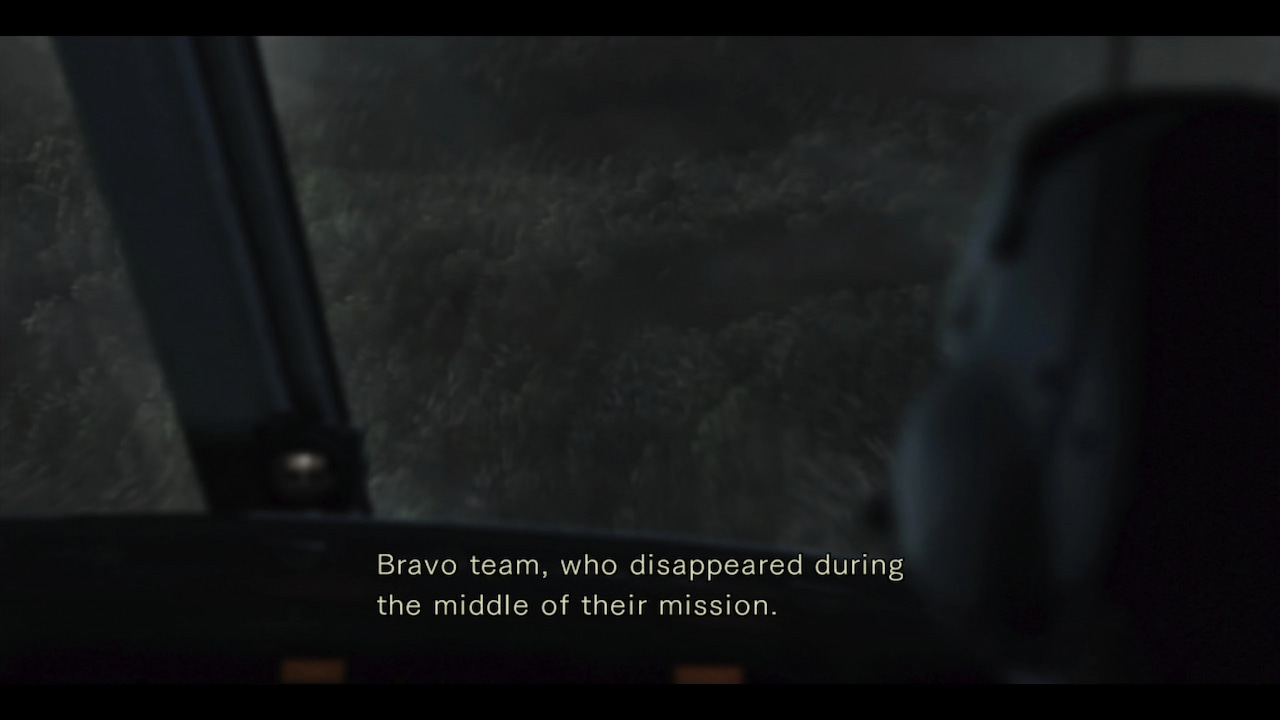
STARS team approaches the Spencer Mansion amid mystery
Experience
Prior to playing Resident Evil Remake the first time in 2005, I had only played the original release of Resident Evil: Code Veronica for the Sega Dreamcast. At the time of writing this I have completed every Resident Evil title in the series, some over 50 times like the original RE4, 2002 REmake. I have also played a couple Silent Hill games, The Evil Within series, and many other survival horror games.
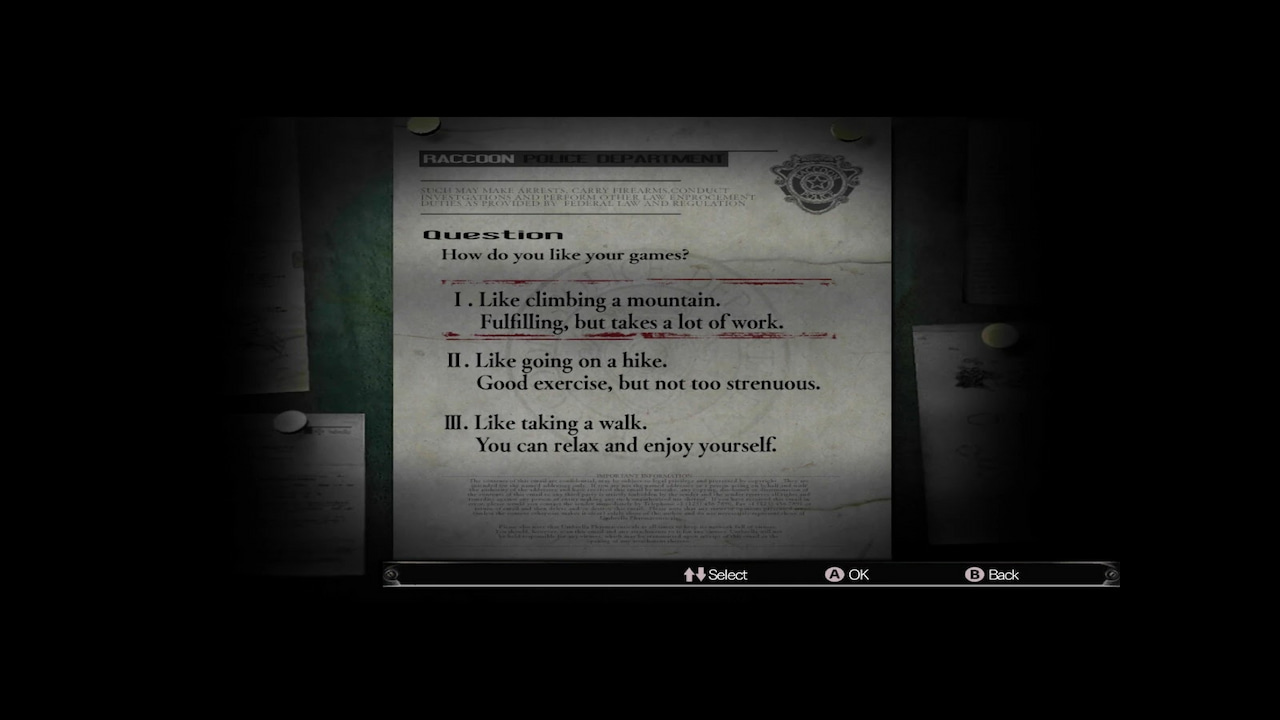
Choose your challenge level: climb a mountain, hike, or take a walk
Impressions
Introduction
After selecting your character and difficulty, Resident Evil begins with a 3D pre-rendered cutscene detailing the bizzare murderers happening as you look to the mansion in hopes of uncovering the truth to all of it. The CG for the time is impressive, and evokes a B-movie feel keeping the game in-line with the sentiment of the original Resident Evil.
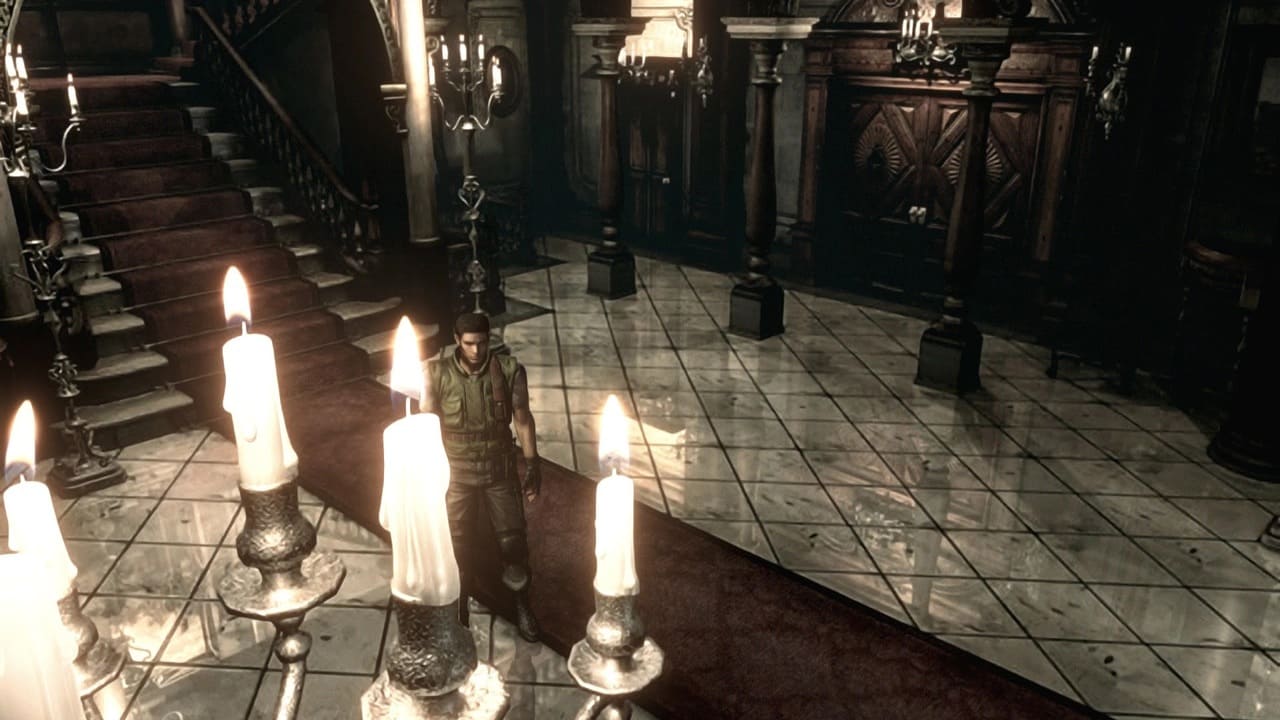
Chris stands beneath flickering candlelight in the mansion’s main hall
Gameplay and Mechanics
In Resident Evil (2002), gameplay mechanics focus on survival and strategic decision-making, incorporating several notable features:
- Survival Focus: Players must manage resources carefully to survive against zombie hordes and other enemies.
- Crimson Head Zombies: Zombies reanimate after being killed, adding tension and urge strategic planning, enhancing the fight-or-flight nature of Resident Evil.
- Item Management: Limited inventory slots stress thoughtful item collection and usage.
- Cancels: Advanced players can reload cancel, cancel stair climbing (stair skating) and other things.
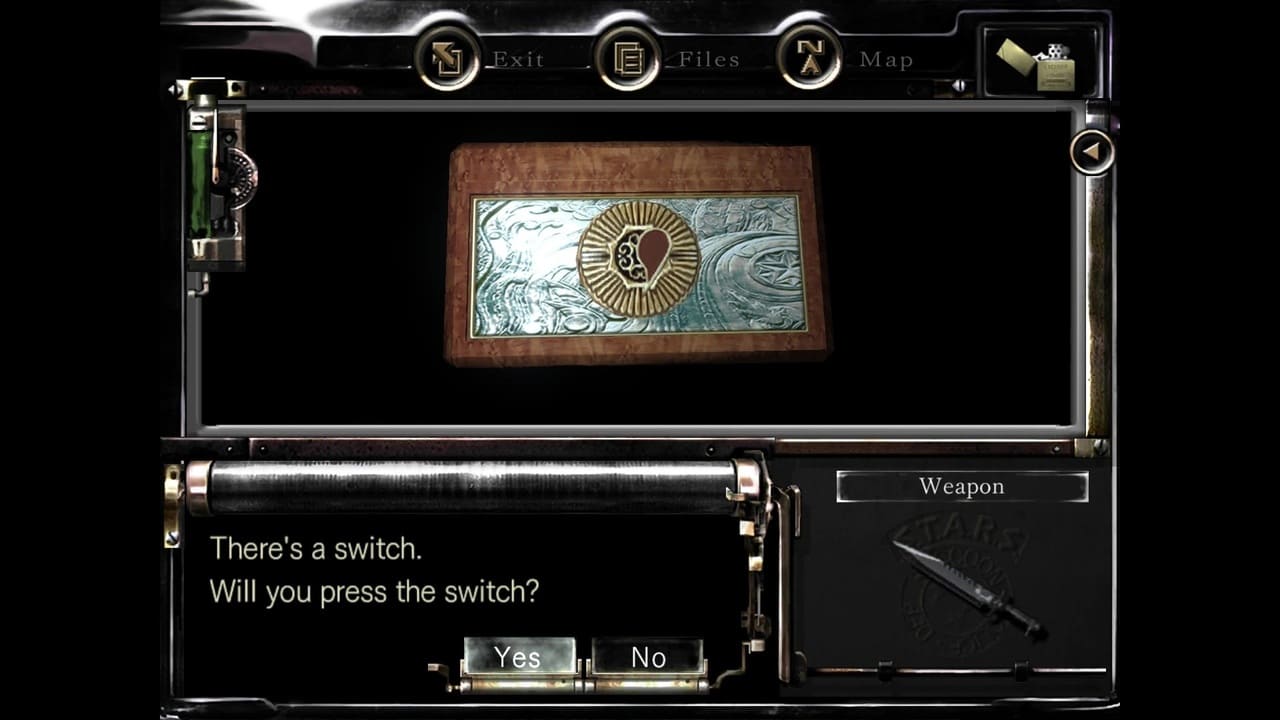
Attempting to unlock the mysterious heart-shaped box with a tense prompt
Character and Art Design
The character and art design for Resident Evil (2002) masterfully blend eerie realism with stylistic choices that enhance the horror experience. The creatures, from grotesque zombies to fearsome hunters, utilize detailed textures and animations, immersing players in a chilling world. Level design is intricately crafted, featuring claustrophobic corridors and dimly lit rooms that create a sense of dread and uncertainty. The atmosphere is further amplified by sound design and the use of looping videos from candlelight flickers to lightning flashes, which build tension and provide sinister backstories, keeping players on edge as they navigate the terrifying environment.
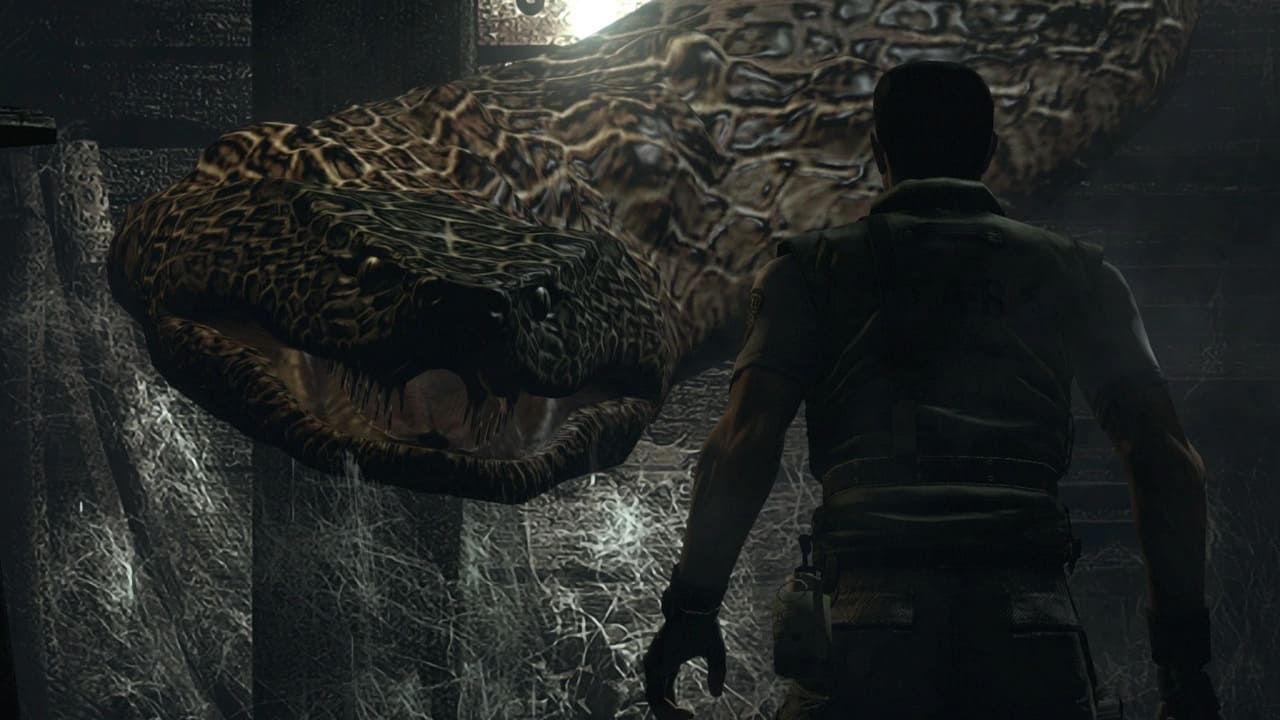
Close-up of Yawn, the snake boss, during the first attic encounter with Chris.
Unique Features and Mechanics
In addition to the introduction of Crimson Head Zombies, Resident Evil (2002) features several other unique mechanics that enrich the survival horror experience:
- Dynamic Backtracking: The reimagined mansion layout includes zombies breaking through doors and pursuing players into different rooms. This breaks the illusion of safety, ensuring that previously cleared areas may not remain secure, keeping players on edge throughout their journey.
- Defensive Items: The inclusion of daggers, stun guns, and flash grenades serves as a last line of defense when grabbed by enemies. These consumable items must be used judiciously, adding a crucial layer of strategy to encounters.
- Kerosene Mechanic: Players can use kerosene to burn zombie corpses, preventing them from returning as Crimson Heads. Since kerosene is scarce and inventory slots are limited, deciding whether to dispatch the future threat or conserve resources adds a constant layer of tension.
Unlockables:
- Once Again: New Game Plus with a twist. A special zombie has spawned in the game with grenades strapped to it and attacking it will resort in an instant game over.
- Invisible Enemy Mode: All of the enemies in the game are invisible, giving you a true test of spatial awareness.
- Real Survival: Unlockable mode that is harder in difficulty and removes the linking of item boxes.
- Speedrunning: Beating the game in under 5 hours unlocks Barry’s custom .40 S&W Samurai Edge with infinite ammo. Clearing the game under 3 hours unlocks the Infinite Rocket Launcher for extra playthroughs.
- Costumes: Multiple completions of Resident Evil unlocks more costumes to choose from.
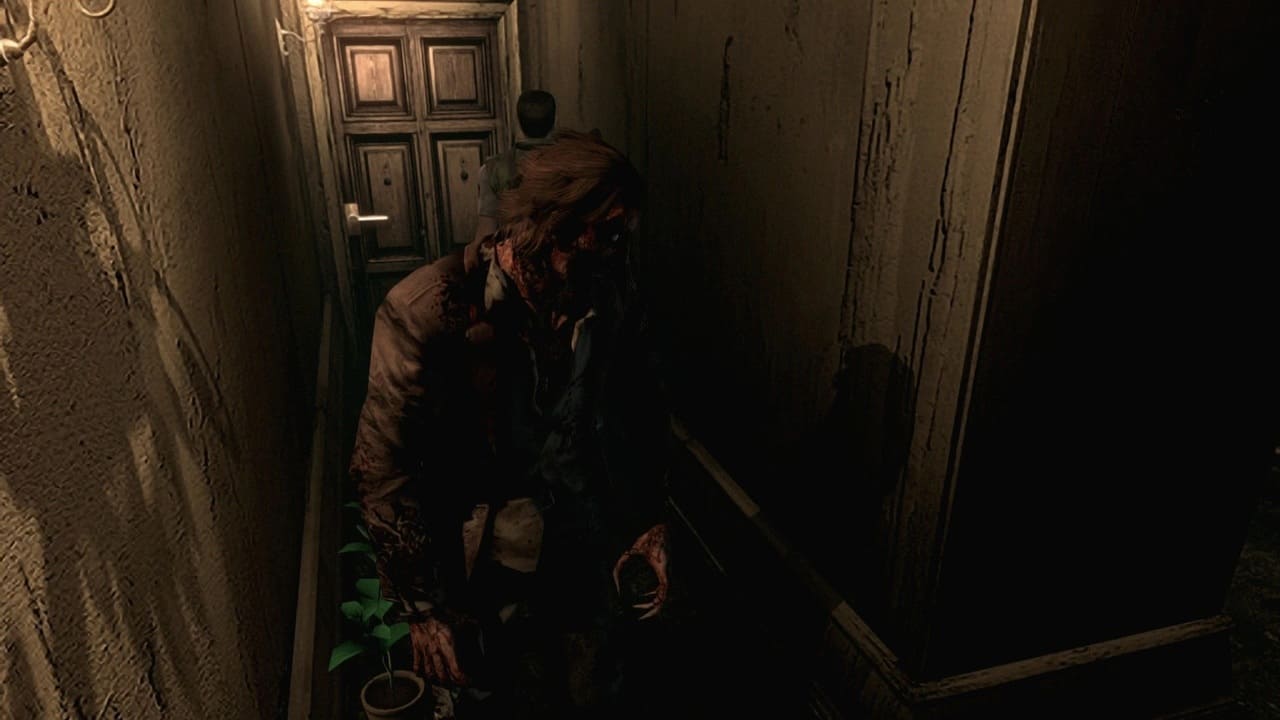
Crimson Head lurking in Cupid’s Corridor, 2F.
Seiyuu Performances
The standard EN (English) dub for the game still has the cheese and charm of the original, despite a deliberate refinement of the original script. The Japanese track for PC players can be obtained and features the following seiyuus:
- Atsuko Yuya
- Known for her roles as Jill Valentine in Resident Evil, Miwako Sato in Detective Conan, Anya Stroud in Gears of War, and Zamira Tchaikoskaya in Tiger & Bunny 2.
- Hiroki Tochi
- Recognized for voicing Chris Redfield in Resident Evil, Pantherlily in Fairy Tail, Nathan Drake in Uncharted, and Ovan in .hack//.
- Yusaku Yara
- Known for his portrayal of Barry Burton in Resident Evil, Jiraia in Gintama Rumble, Lord Slug in Dragon Ball, and Space Demon King in Super Robot Wars.
- Ami Koshimizu
- Known for her performances as Rebecca Chambers in Resident Evil, Holo in Spice & Wolf, Mai Shiranui in King of Fighters, and Ibuki Mioda in Danganronpa.
- Joji Nakata
- Renowned for voicing Alucard in Hellsing, Kirei Kotomine in Fate, Sol Badguy in Guilty Gear, and Albert Wesker in Resident Evil.
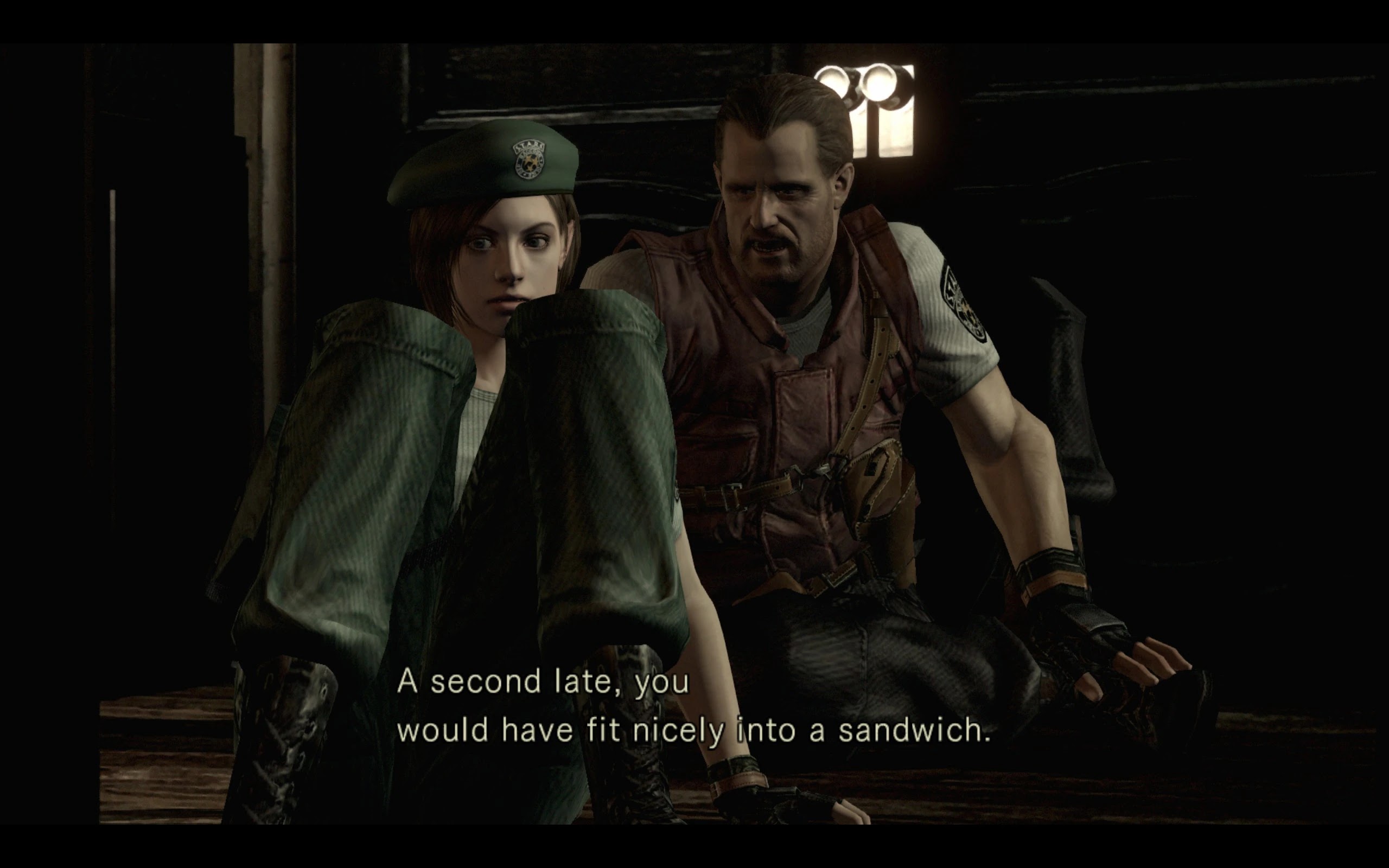
Barry saves Jill from being crushed in the iconic “Jill Sandwich” cutscene.
Verdict
Resident Evil (2002) revitalizes the survival horror genre with innovative gameplay mechanics, haunting atmosphere, and a perfect blend of nostalgia and modernization. The introduction of Crimson Head zombies, dynamic backtracking, and strategic resource management keeps players constantly engaged and challenged. Extra unlockables and gameplay modes offer significant replay value, ensuring an experience that stays fresh and rewarding even after multiple playthroughs.
Overall, this remake stands out as a definitive entry in the series, appealing to both longtime fans and newcomers alike.
TLDR
Rating: 10/10
In Summary: Resident Evil (2002) stands as not only the definitive way to experience the iconic survival horror franchise but also set the gold standard for respectful remakes. Its masterful blend of enhanced atmosphere, unique gameplay mechanics, and strategic challenges creates a tense and immersive adventure.
By retaining the original’s charm while modernizing key elements, this remake showcases the dedication of its developers and remains a benchmark for future remakes in the genre.
Whether you’re a longtime fan or a newcomer, Resident Evil (2002) offers an unforgettable journey into terror.
References
- GoldMetalSonic. (2022, January 31). Resident Evil (GameCube) – E3 2002 Trailer (DVD Rip) 4K60 Upscale. YouTube. https://www.youtube.com/watch?v=DRGz9TAo1pU
- Doughboy. (2002, April 5). Future of Resident Evil and game craftsmanship. Interview of shinji mikami resident evil re-make 1. https://survivhor.biohazardfrance.net/morbidcreations/re_behind/int_remake/int_remake_1.htm


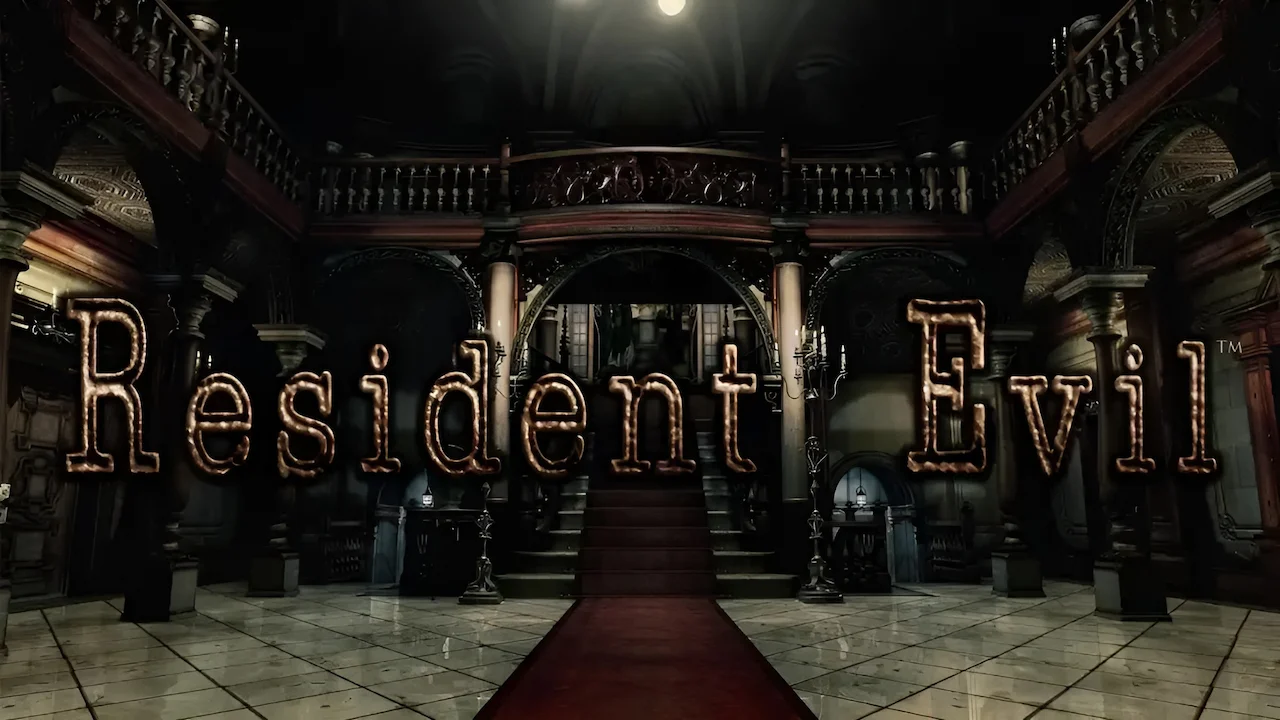
Leave a Reply